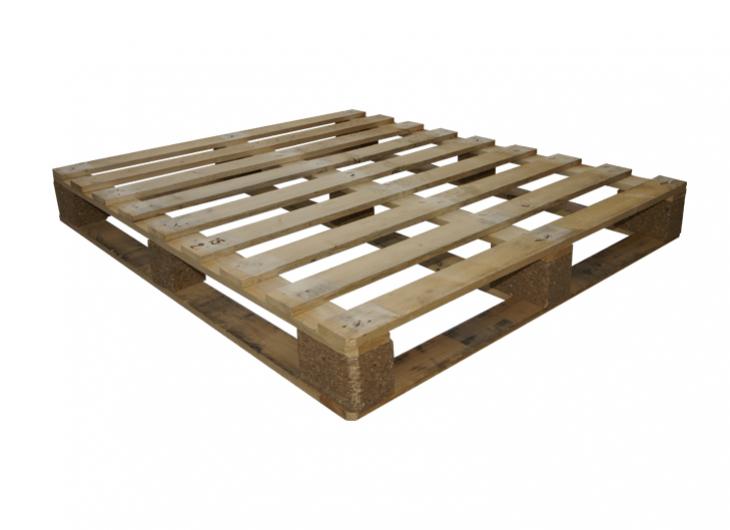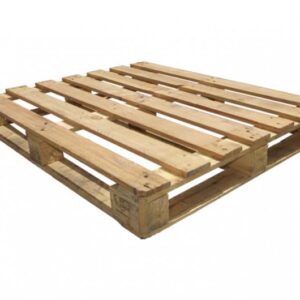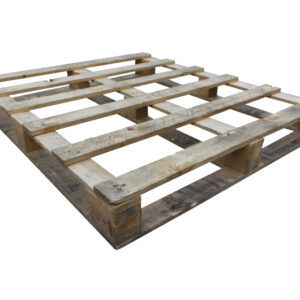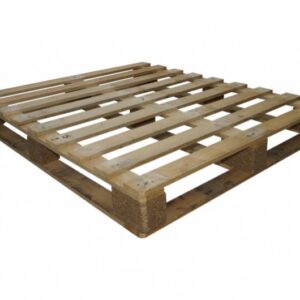Unlock Value with Grade B Pallets: Your Smart Choice for Medium/Heavy Duty Needs!
Ever found yourself staring at a mountain of goods, wondering about the most cost-effective yet reliable way to get them from A to B? We’ve all been there! Shipping and storage are the backbone of any business, and the right pallet can make all the difference. Today, we’re diving deep into a fantastic option that often gets overlooked but offers incredible value: the Grade B Short & Long Board Perimeter Base Pallet (1200 x 1000 mm), Medium/Heavy Weight.
Think of this as your friendly guide to understanding why this specific pallet might just be the unsung hero of your logistics. We’ll break down what “Grade B” really means, explore the unique advantages of its design, and help you decide if it’s the perfect fit for your operational needs.
Decoding the “Grade B” Mystery
Let’s be honest, the term “Grade B” can sometimes sound a little… well, less than ideal. But in the world of pallets, it’s a badge of honor, signifying a pallet that’s been used but is still very much functional and ready for its next mission. It’s a smart choice that helps you reduce costs and embrace sustainability without compromising on performance for many applications.
So, what makes a pallet a “Grade B”? Typically, it means the pallet has seen some use and might have minor cosmetic imperfections. This could include:
- Slight discoloration: Perhaps a bit of dirt or a faded appearance from its previous life.
- Minor surface wear: Small nicks, scuffs, or chips on the deckboards.
- Non-structural repairs: In some cases, a Grade B pallet might have had a small, non-structural board replaced or a minor repair to ensure its overall integrity.
Key takeaway: A Grade B pallet is not a broken or damaged pallet. It’s a sound, sturdy pallet that has simply been repurposed. This makes it an excellent economic and ecological choice!
The Power of the Perimeter Base: A Design Advantage
Now, let’s talk about the specific design of this pallet: the Perimeter Base. This is where things get really interesting, especially for medium to heavy-duty applications. Unlike a standard 4-way entry pallet with stringers that run between the blocks, a perimeter base pallet features boards that run around the entire perimeter of the pallet.
This design offers several significant benefits:
- Enhanced Stability: The continuous perimeter boards provide superior rigidity and prevent the duckboards from shifting under load. This makes it a much more stable platform for your goods.
- Improved Forklift Access: The perimeter design often allows for easier and more secure engagement with forklift forks, especially from the sides. This can lead to faster and safer loading and unloading.
- Greater Load Distribution: The continuous support around the edges helps to distribute the weight of your cargo more evenly, reducing stress on individual deckboards and the overall pallet structure.
- Reduced Damage During Transit: The added stability and load distribution can significantly minimize the risk of goods shifting or becoming damaged during transportation.
Why the (1200 x 1000 mm) Size Matters
The dimensions of this pallet, 1200 x 1000 mm, are crucial. This isn’t your standard Euro pallet size. This particular dimension offers a generous surface area, making it ideal for handling larger or multiple smaller items in a single go.
- Versatility: The 1200 x 1000 mm footprint is incredibly versatile. It can accommodate a wide range of product types, from stacked boxes to bulk items, and can be efficient for international shipping standards in certain regions.
- Maximizing Space: When used effectively, this size can help you maximize the usable space on your warehouse shelves and within shipping containers.
Medium/Heavy Weight: Built to Last!
The “Medium/Heavy Weight” designation tells you these pallets aren’t just for light loads. They are constructed with sturdier materials and a more robust design to handle the demands of:
- Industrial goods: Think machinery parts, raw materials, or larger retail items.
- Bulk storage: Stacking multiple layers of goods in your warehouse.
- Shipping of heavier items: Confidently transporting products that require a strong and stable platform.
You can trust these pallets to support your valuable inventory without bowing, breaking, or compromising the integrity of your shipment.
Bringing It All Together: When is This Pallet Your Best Bet?
So, you’ve got a Grade B perimeter base pallet, measuring 1200 x 1000 mm, designed for medium to heavy weights. When should you be reaching for this option?
- Cost-Conscious Operations: If budget is a priority, Grade B pallets offer significant savings over new pallets, allowing you to reinvest those savings elsewhere in your business.
- Non-Critical Aesthetics: For products where the pristine appearance of the pallet isn’t a primary concern (e.g., internal warehousing, raw material transport), Grade B is perfect.
- Applications Requiring Enhanced Stability: If your goods are prone to shifting, or if you’re dealing with uneven loads, the perimeter base design offers that extra peace of mind.
- Medium to Heavy Load Requirements: When your goods demand a pallet that can truly take the weight, this specific pallet fits the bill.
- Sustainable Practices: Choosing a Grade B pallet is a fantastic way to contribute to a circular economy, reducing waste and the need for new timber.
A Table for Clarity: Key Features at a Glance
To help you visualize the benefits, let’s break down the specifications and advantages in a clear, easy-to-read table.
| Feature | Description | Benefits |
|---|---|---|
| Grade | Grade B (Used, functional, minor cosmetic imperfections) | Cost savings, sustainability, reduced environmental impact |
| Board Type | Short & Long Board Perimeter Base (Boards run around the entire perimeter) | Enhanced stability, improved load distribution, better forklift access, reduced product damage |
| Dimensions | 1200 mm x 1000 mm | Versatile for various cargo sizes, efficient space utilization in warehouses and transport |
| Weight Capacity | Medium/Heavy Weight (Designed for substantial loads) | Reliable support for industrial goods, bulk storage, and heavier shipments |
| Material | Typically robust hardwood or softwood (depending on supplier) | Durability and strength for demanding applications |
| Entry Type | Usually 4-way entry (due to perimeter design, check specific product details) | Flexibility in forklift operation |
| Ideal Use Cases | Warehousing, shipping, logistics for medium-to-heavy goods, cost-sensitive operations, sustainable packaging | Reduced operational costs, improved product protection, efficient material handling, eco-friendly practices |
Common Questions Answered: Your FAQ
We know you might still have a few questions bubbling up. Here’s our quick FAQ to clear things up:
Q1: Is a Grade B pallet safe for shipping my products?
A1: Absolutely! The “Grade B” designation refers to cosmetic imperfections, not structural integrity. As long as the pallet is suitable for the weight and type of your goods, a Grade B pallet will provide a safe and reliable platform. Always ensure the pallet is inspected for any major damage before use.
Q2: Will Grade B pallets look bad in my warehouse or during delivery?
A2: This is a valid concern. While Grade B pallets might have some signs of wear, they are generally clean and functional. If your brand image relies heavily on pristine presentation, you might consider using these for internal movements or for products that will be fully concealed. However, for many businesses, the cost savings and sustainability benefits outweigh minor aesthetic considerations.
Q3: How do I know if a 1200 x 1000 mm pallet is the right size for my needs?
A3: Consider the typical size and quantity of items you ship or store. Measure your standard products, and think about how many can fit comfortably on the pallet. If you often move larger items or multiple smaller items together, this size offers a good balance. It’s also worth comparing it to your container or truckload dimensions to maximize space efficiency.
Q4: What is the difference between a perimeter base and a stringer pallet?
A4: In a perimeter base pallet, deckboards are connected by blocks that form a continuous frame around the pallet. In a stringer pallet, boards are supported by longitudinal stringers. The perimeter base generally offers greater rigidity and stability, especially under lateral or uneven loads.
Q5: Where can I find these Grade B perimeter base pallets?
A5: Reputable pallet suppliers specializing in new and used pallets are your best bet. Look for companies that offer a range of pallet grades and sizes, and always ask about their inspection and grading process.
Ready to Make the Smart Switch?
Embracing Grade B perimeter base pallets is more than just a purchasing decision; it’s a smart business strategy. You’re getting robust, reliable pallets that are perfectly suited for medium to heavy-duty applications, saving money, and making a positive contribution to the environment.
Don’t let the “B” fool you. These pallets are robust, resourceful, and ready for action. By understanding their unique design and benefits, you can unlock significant value for your logistics operations.
Are you currently using Grade B pallets? What’s your experience been like? Share your thoughts in the comments below!




Reviews
There are no reviews yet.